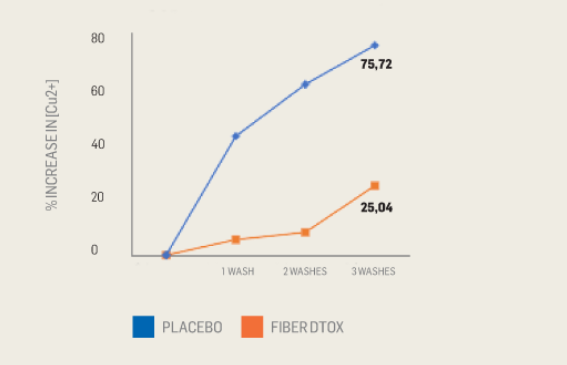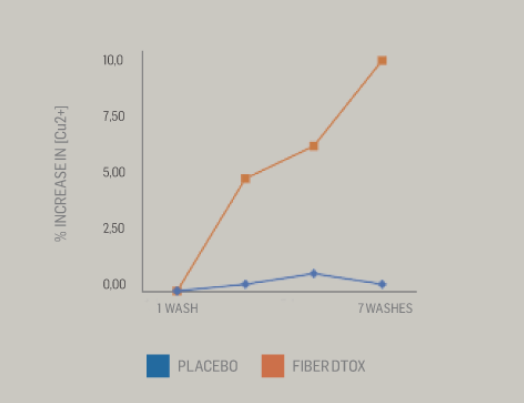Enhanced TDS
Knowde-enriched technical product data sheet
Identification & Functionality
- Carrier
- INCI Name
- Ingredient Origin
- Cosmetic Ingredients Functions
- Technologies
- Product Families
Features & Benefits
- Benefit Claims
- Labeling Claims
- Hair Mirror of the Environment
Indoor air pollution and urban air quality are listed as two of the world’s worst toxic pollution problems affecting human’s health. The emission of particulate materials, organic molecules, heavy metals or other harmful materials into the atmosphere is a proven cause of serious health problems to living organisms. Water pollution also affects the entire biosphere and may represent a health risk to many populations, and even after treatment water still have dissolved ions with potentially harmful effects. Hair adsorbs very effectively different chemicals present in the environment and is considered to be one of the most efficient substrates for pollution monitoring by scientists and forensic experts. When exposed to pollution, hair adsorbs not only organic molecules, but also metals such as Copper and Iron. Even tap water contains dissolved metals thatwill be adsorbed by hair during the bath. When the hair fiber is damaged, it becomes even more porous and reactive, increasing its capacity of adsorpting toxins and heavy metals.
When Hair has been Exposed to Chemical Attacks its Ability Times Greater. To Absorb Heavy Metals Becomes 100 Times Greater
- Heavy Metals & Free Radical
Recent research on hair science has demonstrated that heavy metals such as copper, once adsorbed onto hair fibers and in contact with strong oxidants such as hydrogen peroxide catalyze the formation of free radicals (Fenton reaction) that destroy the cuticle and exposes the hair fiber to further damage. In order to keep a healthy hair in treatments such as bleaching, lightening or dyeing is very important to remove the heavy metals and toxins from the fiber.
Copper Levels Found in Samples Hair
(In contact with tap water containing 2 ppm of Copper)
Hair Copper (PPM) Virgin 20 Bleached 200 FIBER DTOX captures and removes toxins and heavy metals adsorbed by hair.
- Benefits
- Detoxification
Applications & Uses
- Application Format
- Hair Care Applications
- Use Level
- 1.0 - 4.0%
- Usage Guidelines
Product % Shock Treatment 2.0 to 4.0% Hair Mask 2.0 to 3.0% Daily Use Shampoo 1.0 to 3.0% Conditioner 1.0 to 3.0%
Regulatory & Compliance
- Certifications & Compliance
Technical Details & Test Data
- Test Data
The mechanism of biosorption of FIBER DTOX can be explained by the high concentration of ionizable groups (carboxyl groups) present in the molecules of FIBER DTOX that react with the heavy metals, removing them from the fibers. FIBER DTOX film-forming properties also prevent pollutants from attaching to hair.
FIBER DTOX is especially recommended for products to prevent accumulation of toxins on the hair and in treatments to remove accumulated metals in the hair fiber. It’s also highly recommended before applying oxidants in hair treatments such as permanent and semi-permanent dyes, bleaching / lightening or perms.
PROOF
Results of tests conducted to prove the efficiency of FIBER DTOX in preventing adsorption of metals (copper [Cu II]) in strands of hair.
Copper uptake tests were performed on bleached hair strands exposed to a solution of copper sulfate 0.01M (upper limit of safe copper levels in drinking water, accordingly to WHO). Copper levels in hair were evaluated by Inductively Coupled Plasma-Optical Emission Spectrometry (ICP-OES).
The strands were subjected to three different conditions, that simulate different hair care routines:
1. Prevention of copper uptake: hair strands were pre-treated with an anti-pollution protective leave-on formula containing 3% FIBER DTOX. After 5 minutes massaging the strand, hair was rinsed with 30 ml of Copper solution, rinsed with demineralized water and dryed.
2. Reduction of copper levels: hair strands were exposed to the copper solution for 15 minutes and treated with a Detox Gel Mask for 15 minutes, followed by rinsing with copper solution, demineralized water and dried.
3. Prevention + reduction of copper levels: hair strands were moistened with 30mL of copper solution, followed by massaging with 3ml of shampoo containing 3% Fiber Dtox. Strands were rinsed with 30ml of copper solution, massaged with 3ml of conditioner with 2% Fiber Dtox during 4 minutes, rinsed with 30 ml copper solution, followed by mineral water and dryed. After each washing/conditioning cycle, hair strands were treated with a Detox Gel Mask for 15 minutes, followed by rinsing with copper solution, demineralized water and dried.
Copper Uptake

Copper Uptake

Copper Uptake
